The People, Places and
Priorities of Riverdale:
A Health Promotion Approach
to Understanding Communities
What
is the Riverdale Community Quality of Life Project About?
In September, 1996 the South Riverdale Community
Health Centre and the University of Toronto received
funding to carry out a Community Quality of Life
Project in Riverdale. The purpose of the project was
to learn about the aspects of Riverdale that contributed
to people's quality of life as well as the things that
did not. We were also interested in learning how people
cope and manage in Riverdale and about some of the
programs or services that people wanted to see in the
community. By doing so we hoped to identify community
strengths that should be preserved and needs that could
be addressed.
Over the course of the project we spoke with 14 groups
of community members involving 102 people, 11 different
service providers, and six elected representatives.
Community members also went out and interviewed 65 of
their neighbours and friends. The questions that were
asked and answered were:
- What is it about Riverdale that makes life
good for people?
- What is it about Riverdale that does not make
life good for people who live here?
- What are some of the things in the
neighbourhood or community that help you cope or
manage when you or your family has problems?
- What would you like to see in the
neighbourhood or community that would help you
cope or manage?
What We
Learned About Life in Riverdale
The People of Riverdale
The picture of Riverdale that emerges is a vibrant
community that is uniquely caring and active. It is also
rich in both cultural and socio-economic diversity.
Another unique aspect of this community is its elected
representatives. The people chosen to represent Riverdale
are in touch with the issues and concerns of residents.
The Places of Riverdale
Riverdale is an urban environment with many natural
amenities such as parks. Its urban amenities allow
residents to meet day-to-day needs. These these include
public transit, places to shop, health care facilities,
and recreation centres. Its many agencies are places
where residents can engage in recreation activities,
receive assistance in times of need, and contribute to
help others in the community.
The Priorities of Riverdale
Riverdale has its share of problems. While many
battles have been won, environmental problems persist
around issues of bad air and bad water. The employment
and income issues in Riverdale involve poverty and
unemployment. Finally, people are concerned about crime,
vandalism, and personal safety.
The Strengths of Riverdale:
Its People Riverdale
is a uniquely caring and concerned community.
People and neighbours care about and help each
other in many ways. They also support local
agencies, and volunteer to help people in need.
It is an activist community where people are
willing to take a stand. Community agencies,
volunteer groups, and local representatives work
closely with citizens to have their voices heard.
Corner of Broadview and
Gerrard Streets 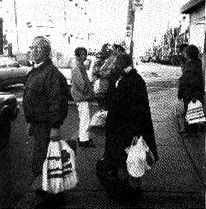
I really like working for Meals on
Wheels, it makes me feel good, giving back to the
community. - ResidentIn
Riverdale there's a certain amount of spunkiness,
particularly among the people that have been here
a very long time. They're not going to be
defeated. - Service Provider
Riverdale is a very active political
community. It has an awful lot of caring folk who
get very involved in not just the issues that are
of concern to them, but are of concern to the
community. - Marilyn Churley, MPP
The Strengths of Riverdale:
Its Agencies and
Resources
Community agencies and
resources make life good for people in Riverdale.
Recreation and community centres like Woodgreen
and Ralph Thornton bring people together, offer
activities, and help when needed. The South
Riverdale Community Health Centre provides
medical care and other kinds of support.
Residents feel these services should be
maintained and be kept free.
Woodgreen Seniors' Residence on Queen St.
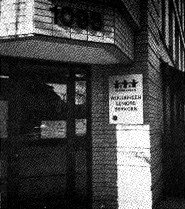
A lot of people would not know what to do
without Woodgreen. - Senior We are lucky to have a
community centre, because some communities don't
have one. - Youth
Community dinners at Woodgreen Church are
really good. It gives an opportunity to talk and
socialize. And you get a free meal which is good
because some people are not able to cook, or
because of financial reasons are not able to
afford it. - Adult
Riverdale Priority:
Environmental Problems
Riverdale is well known for its
many citizen movements that have worked for
better air, water, and soil quality. Citizen
movements shut down large incinerators, and
caused the largest lead contaminated soil removal
in North America.
There are still challenges. Riverdale still
has bad air related to local industries, the
Metro Sewage Works, and expressways. The beaches
are often unsafe and the Don River is polluted.
Many citizen groups are addressing these issues.
Don River Looking North From
Queen Street Bridge 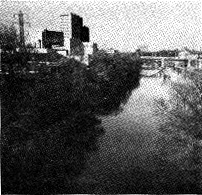
Riverdale is named after a river but most
people thought of it as an open sewer. - Metro
Councillor Jack Layton
People are
cleaning it up, concrete things, not just asking
for money, but actually taking a garbage bag and
going along the Don River and cleaning it up,
which is done every year.
We have major problem with land-fill
sites, down by the Commissioners Plant and the
torn down gas stations. There are landfills with
animals, sewage, and PCBs. -
Riverdale Residents
Riverdale Priority:
Unemployment and
Poverty
As compared to Toronto as a
whole, Riverdale, and South Riverdale in
particular, have a higher percentage of lone
parent families, persons with less education, and
more on social assistance.
Riverdale has lost many industrial jobs
creating high levels of unemployment. Cuts to
social assistance rates have also hurt many
Riverdale residents and have created even more
poverty.
Closed Factory at Dundas and Logan
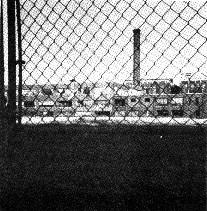
Over the past year there's more people
begging on the Danforth. Things are getting
worse. There are definitely more people falling
through the cracks.
People are worried
about jobs now, everyone is. It seems like we are
getting ourselves into a depression instead of
getting out of one. -Riverdale
Residents
It used to be a very solid working class
area with a lot of jobs. There were factories and
plants in the area, but many of those have
closed. - Toronto
Mayor Barbara Hall
Riverdale Priority:
Crime and Safety
People generally feel safe in
Riverdale -- during the day. There is worry about
break-ins, personal safety, and drug use. There
is a concern about vandalism that many believe is
caused by youth.
Concern exists about unwanted
businesses in the neighbourhood and their
associated clientele. And many people believe
that service cuts are only going to make things
worse.
Riverdale
Street 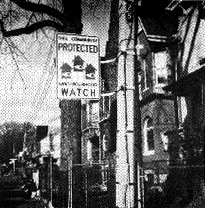
We have a place that has been broken into
twice this summer. Now we lock the door, even
when we are home. Vandalism still goes
around, young kids break the antennae on the
cars. It's primarily by youth, at schools and at
the recreation centres.
I don't go out at night. There is crime
anywhere. The day is okay but night time is
different. - Riverdale Residents
Riverdale Responses:
Riverdale's
network of community-based agencies and services
work together and with residents to build upon
community strengths.
Citizen groups such as Riverdale Against the
Cuts, Greater Riverdale Economic Action Together,
and the Task Force to Bring Back the Don act to
improve the community.
These activities are supported by the City
government. The local representatives work
closely with the community.
Riverdale Business Centre on Queen Street 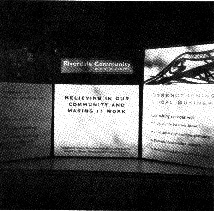 The highly organized nature of Riverdale
in Ward 8 has made a real difference in being
able to do anything at all. - City
Councillor Peter Tabuns
Whenever
there's problems people work together. - Riverdale
Resident
I would say a good portion of the ward are
very sharp and astute and keen to get involved
when they see fit. - Public School
Trustee Soo Wong
Towards the Future
Riverdale residents, service providers, and
representatives work hard to deal with local problems.
There are many services available in Riverdale, but we
heard about gaps. Many women feel that adequate and
affordable child care is not available. There is a need
for youth and seniors programs. Some felt that agencies
didn't work hard enough to let people know what was
available. New Canadians face many challenges in gaining
education and employment experience.
People are worried about funding cuts. Some services
have been capped, and others reduced. We heard about the
effects of welfare cuts on families and children and how
it has increased hunger and the need for emergency food
services. For many people the presence of low-cost
services are important means by which they cope and
manage. Riverdale needs to consider the effects on
people, and the community itself, of further reductions
in services.
Use of This Report
The Community Quality of Life Project has
allowed us to learn about and from the community. A
number of project reports document the strengths and
problems of Riverdale and how people work to improve
quality of life. We urge as many people as possible to
consider its implications for improving quality of life
in Riverdale. If the past history of Riverdale is any
guide, this should lead to thoughtful and effective
action.
Special Thanks . . .
To the many community members and
service providers in Riverdale and Lawrence Heights who
took the time and effort to tell us about themselves and
their work. We also wish to thank the Mayors of Toronto
and North York, the Riverdale and Lawrence Heights City
Councillors, Metropolitan Toronto Councillors, Members of
the Provincial Parliament, and School Trustees for their
participation.
The Community Quality of Life
was a partnership of the South Riverdale and Lawrence
Heights Community Health Centres (CHCs), and the
University ofToronto. The project was carried out with
the assistance of the North York andToronto Departments
of Public Health, the Metropolitan Toronto District
Health Council, and the Canadian Mental Health
Association National Office. The North York Community
House and the Somaliland Women's Organization were
community collaborators in the Lawrence Heights Study.
Funding for this project was provided
by a grant from the Jessie Ball duPont Religious,
Charitable, and Educational Fund of Jacksonville,
Florida.
Supplementary funding was given by the
North York Community Health Promotion Research Unit.
Pizza Pizza and Druxy's served as
corporate supporters of the project.
|